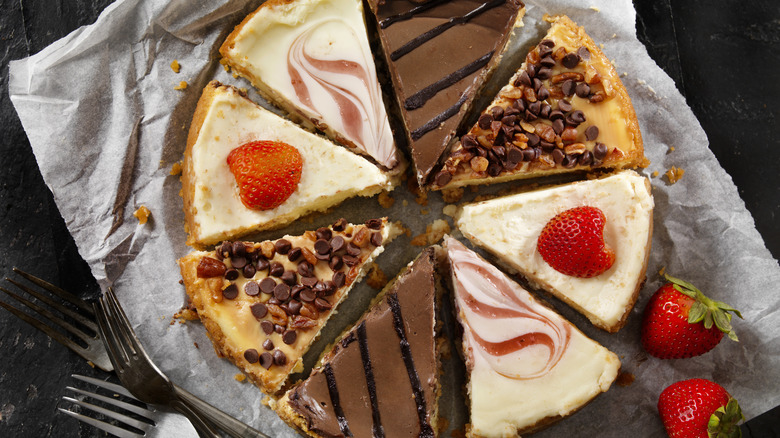How Long Does Cheesecake Last In The Fridge?
The perfect cheesecake has many desirable traits. It has a sweet and creamy flavor and a rich, indulgent texture. One thing it is not, however, is light. A single slice of this rich dessert is all you need to fill you up. As such, it is unlikely that you will ever finish an entire cheesecake the same day you serve it — not without the help of a few guests, as least. This may lead you to wonder how best to store your cheesecake and how long it will last. The answer depends on a few factors, so read on to learn the exact lifespan of your cake and what you can do to lengthen it.
As with most dairy-based dishes, it is necessary to place any leftover cheesecake in the fridge so that it can stay fresh for as long as possible. If placed in the refrigerator in a timely manner, a homemade cheesecake will last anywhere from five to seven days before starting to decline in quality. The type of cheesecake you are enjoying can also be a factor that impacts the shelf life. For example, a commercially-produced cheesecake will last longer than a homemade cheesecake, as these often have stabilizers and preservatives introduced to extend the freshness of the dessert. Another difference that will affect individual cakes is the presence of perishable toppings, like fruit. Sliced fruit only lasts one to five days in the fridge, and this increased perishability will extend to that of your cheesecake.
How to store cheesecake
In order to give your cheesecake the best chance of staying fresh, it is important to make sure that you take the proper steps to store it correctly. When preparing your cake to be stored, cover it in plastic wrap to prevent it from drying out or absorbing unappetizing odors from other items in the fridge. Then, place it in an airtight container before stashing it away in the fridge. If you would like for your cheesecake to last even longer, you can also place it in the freezer, where it will last for up to two months. Note, however, that there may be a slight change in texture upon thawing.
Even when following these guidelines, you should always examine your cheesecake for signs of spoilage before eating it in order to prevent yourself from consuming harmful pathogens like bacteria and mold. All the classic food safety rules apply. Keep an eye out for changes in color, like browning around the edges, or the growth of white or green fuzz, as well as textural changes, such as the crust becoming soggy. A sour or otherwise unpleasant taste or smell also will indicate that the cheesecake needs to be disposed.

